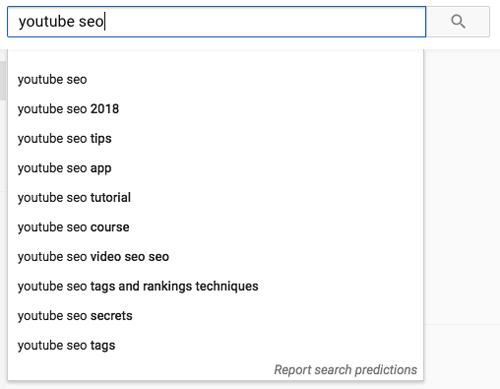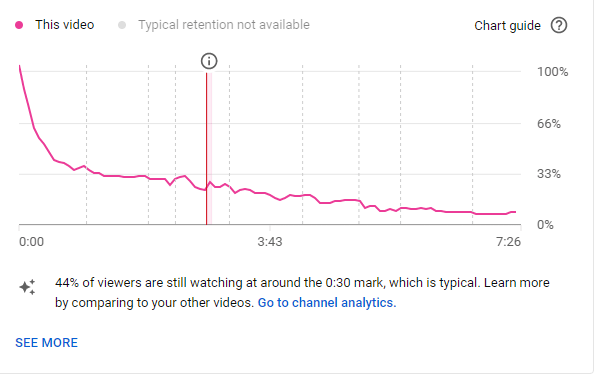
The process of figuring out where a video appears in search results or on a platform according to different criteria is known as ”video ranking.” Keywords, user behavior, relevance, and engagement metrics (like views, likes, and comments) are frequently used as determining factors for video ranking.
Search engines and video-sharing websites like YouTube employ algorithms to examine these variables and decide which videos should show up first in suggested lists or search results.
Increasing viewer engagement and optimizing videos for relevant keywords can help elevate a video’s ranking.
Why to rank your videos on YouTube?
For YouTube coaches, ranking is essential because higher search engine rankings translate into more visibility. A coach’s content has a higher chance of being found by prospective viewers who are looking for related subjects when it ranks well. This exposure can draw in more viewers, strengthen the coach’s reputation, and eventually help their YouTube channel succeed.
YouTube video coaching strategy
SEO, or search engine optimization, is the process of improving content so that it ranks higher on the results pages of search engines. If you want more individuals to read your work and become fans, optimization for search engines is a must.
Google ranks pages based on a variety of factors, including links to the page. YouTube SEO, on the other hand, involves altering not only the videos themselves but also your channel, playlists, metadata, and descriptions of videos.
Make it simpler for people to find your videos on YouTube’s Role and other platforms. Most of the time, you don’t have to think about including search terms in the title, description, or tags of a video.
However, YouTube SEO would be far more useful if videos were more easily found. Because search engine robots cannot see videos, they must rely on text to determine what the content is about.
Use the text in your video’s audio and video as transcripts, closed-captioning, and subtitles as part of a comprehensive YouTube SEO strategy that will enhance user experience, interaction, period spent watching, and traffic.
These four factors are used by YouTube’s search algorithm to determine how to rank videos in search results.
READ MORE : https://brandgaytor.com/youtube-seo-10-tips-to-rank-your-videos-higher/
Important factors
Relevancy: When determining the relevance of a video, consider the title, hashtags, description, and video itself.
Connection: can be measured in a variety of ways, including the number of likes, subscribers, comments, alerts, and time spent watching an ad.
Authenticity: Indicators that can be used to determine which channels have the appropriate level of knowledge, authority, and trustworthiness.
Adaptation: When YouTube attempts to find the best results for a user, it considers what that user has previously searched for and watched. When it involves music and entertainment, YouTube’s role is more likely to select which videos to show based on factors such as relevance, newness, or popularity.
Ways to rank your video
• Optimized Titles and Descriptions: To make your video more comprehensible to search engines, include pertinent keywords in both the title and description.
• Thumbnail Quality: Produce attention-grabbing, excellent thumbnails that grab viewers’ attention.
• High-quality content: Create interesting and worthwhile content to entice people to watch and share your video.
• Tags and Metadata: Give search engines more context by using pertinent tags and metadata.
• Length of Video and Retention: Longer videos typically do better when they have high viewer retention. Throughout the entire video, keep the audience interested.
• Promotion and Sharing: To improve visibility, share your video on forums, social media sites, and online communities.
• Maintain a Consistent Upload Schedule: To keep viewers interested and let algorithms know that your channel is active, upload videos on a regular basis.
• Interact with Comments: You can boost interaction and tell search engines that your content is worthwhile by answering to comments.
• Playlists: To increase the amount of time viewers spend on your channel overall, group your videos into playlists.
• Images and Headings Testing: Try out various titles and thumbnails to see what appeals to your audience the most.
Step 1: YouTube keyword research

1. Relevance: Choose keywords that are directly related to your video’s content.
2. Search Volume: Select keywords with a good balance of search volume and relevance.
3. Analysis of Competition: Determine the level of competition for the keywords you’ve chosen.
4. Long-Tail keyword research: Include niche phrases to reach a more targeted audience.
5. Google Trends: Use Google Trends to find trending keywords and capitalize on current fashions.
6. Use Tools: Use YouTube’s search suggest feature as well as external tools to generate keyword ideas.
7. Include in Title and Summary: Include selected keywords in the video title and description naturally.
8. Tags: Use helpful tags to strengthen the association of your video with the keywords you’ve chosen.
9. Metrics of Engagement: Create content which promotes audience participation because it may boost ranking.
10. Consistent Updates: Stay current on shifting patterns and knowledge.
Step 2: Publish a High – rentation video
1. Engaging Content: Create content that captures the attention of viewers and keeps them watching the video.
2. Optimized Title and Description: To improve search visibility, write a compelling title and description that includes relevant keywords.
3. Thumbnail Resolution: Create a visually appealing thumbnail that precisely conveys the video’s content and encourages clicks.
4. Video Length: Keep viewers interested by managing video length; longer watch periods can improve rankings.
5. Production Quality: Keep video and audio quality high for an expert appearance and an improved user experience.
6. Keyword Research: To increase discoverability, naturally include relevant keywords into the dialogue and captions of your video.
7. Maintain a Consistent Upload Schedule: Publish videos on frequently to build an enduring audience and signal to methods that your content is relevant.
8. Interact with Viewers: Respond to comments and encourage conversation to increase the involvement of the community.
9. Playlists or Closing Screens: Playlists can be utilized for organizing content and encourage longer viewing sessions. Use end displays to encourage additional participation.
10. Promote on Social Media: Promote your videos on the internet to increase visibility and traffic to your content.
11. Analytic Review: Examine video analytics to better understand behavior of the audience, identify winning strategies, and optimize future content.

Remember that high turnover is frequently the result of a combination of factors, and continuous improvement is critical for long-term success.
Step 3: YouTube video optimization

1. Keyword Research: Determine relevant keywords for the videos you create using tools such as Google Keyword Planner.
2. Catchy Title: To entice audiences and improve search visibility, create a catchy, keyword-rich title
3. Engaging Thumbnail: Create a visually appealing thumbnail that accurately reflects your video content.
4. Video Description: Make your description detailed and keyword-rich. Include pertinent links, time stamps, and other information.
5. Tags: Use relevant tags to help YouTube understand the content of your video and improve discoverability.
6. Transcripts and Closed Captions: To improve accessibility and search relevance, make accurate transcripts or closed captions available.
7. Create high-quality, engaging content that encourages user interaction and longer viewing times.
8. Optimized Playlists: Group related videos into categories to increase overall view time and engagement.
9. Encourage on Social Media: Share your video on various networks to increase the number of initial views and engagement.
10. Consistent Uploading Schedule: Create a consistent uploading schedule to build an engaged audience and improve video ranking over time.
Step 4: Promote your video
1. Improve Title and Description: To improve search visibility, include relevant keywords in the title and description of the video.
2. Create an appealing thumbnail that accurately represents your content and entices audiences to click.
3. Create excellent, useful content to encourage user engagement and longer watch times.
4. Keyword Research: Detect and include common relevant keywords in your video tags to improve discoverability.
5. Promote on Social Media: Share the video on various social media platforms to increase exposure and traffic.
6. Encourage Subscriptions and Likes: Encourage viewers to subscribe, like, and comment on your video, as these engagement metrics have a positive impact on ranking.
7. Make Playlists: Group related clips into playlists to increase the likelihood that your content will be shared.
8. Social Interaction: Respond to comments and interact with your audience to create a community around the content you provide.
9. Consistent Upload Schedule: Establish a consistent upload schedule to build anticipation and engage your audience over time.

Conclusion
The main lessons are to increase YouTube rankings by optimizing video titles, descriptions, and tags; making eye-catching thumbnails; interacting with viewers through comments; promoting videos on social media; and sticking to a regular upload schedule.
FAQ( frequently asked questions)
Q1: How important are keywords in YouTube video optimization?
A: Keywords are extremely important. To improve search ability, include relevant keywords in your video title, description, and tags.
Q2: Does video quality influence YouTube rankings?
A: YouTube does value high-quality content. Upload HD videos with good audio quality for a better viewing experience.
Q3: How frequently should I upload videos in order to improve my rankings?
A: Consistency is essential. To keep your audience engaged, upload regularly but prioritize quality over quantity.
Q4: How important are thumbnails in video rankings?
A: Thumbnails pique the interest of viewers. Make visually appealing thumbnails that accurately represent your video content.
Q5: How long should my videos be in order to improve their rankings?
A: It varies, but try to create content that keeps viewers interested. Focus on providing value rather than strictly adhering to a timetable.

Add a Comment